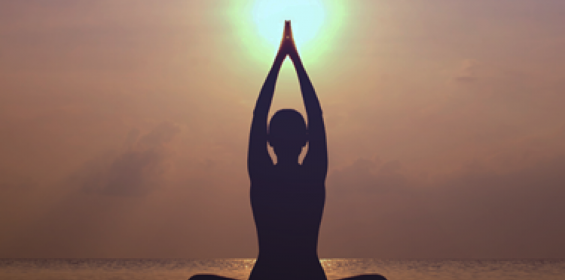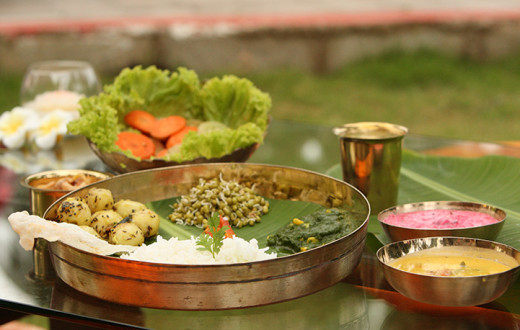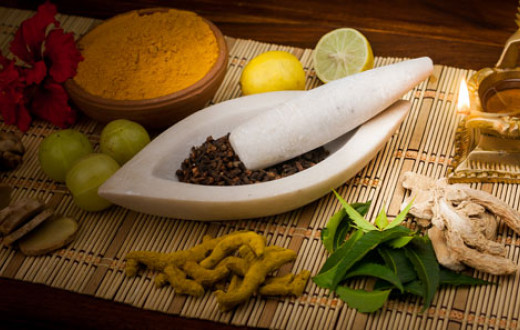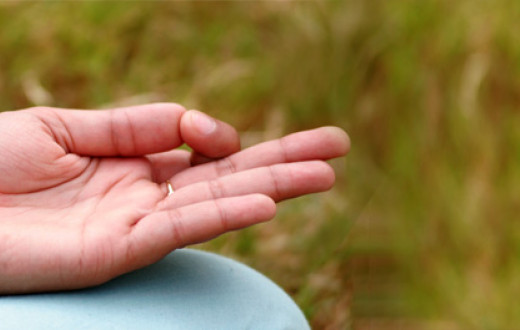As they say, being fit is the new thin. Today’s times are not about being a certain size, but about achieving a certain level of fitness. Awareness about having an exercise regime, clocking in a certain number of steps in the day, reaching a weekly target of exercise minutes… these are some conversation points prevalent everywhere you go - with friends, peers or even on social media.
There are different ways to achieve this. You might choose a form of exercise that you enjoy, the place could be indoors or outdoors. Perhaps you’re working through your schedule to become more exercise compliant. It’s easier to fall off the radar than stay committed, every single day.

Whatever stage you’re at, there are some surprising insights hidden in the ancient wisdom of Ayurveda. Yes, you heard right. This body of science is known for understanding the human body and mind through a different lens. Ayurvedic principles are sometimes almost startling in their revelations of who we are as people, just by our physical structure. There are certain principles which Ayurveda shares on exercise which are useful to remember. There is another gamut of understanding which comes by examining one’s prakriti and following the doshas. More on that later!
लाघवं कर्मसामर्थ्यं स्थैर्यं दुःखसहिष्णुता |
दोषक्षयोऽग्निवृद्धिश्च व्यायामादुपजायते||३२||
Laghavam karmasaamarthyam sthyaram dukhasahishnutaa, doshakshyoagnivriddhishcha vyayamadupjaayate
The right amount of exercise brings about
Laghavam – lightness in the body (and mind),
Karmasaamrthyam – an increase in work capacity,
Sthairyam – an increase in body stability,
Dukha sahishunta – improvement in resistance to discomfort,
Doshakshaya – a balance of the Tridosha,
Agnivruddhi – improvement in strength of digestion.
~ Charaka sutra sthana, Chapter 16, verse 32
The ‘A’ of exercise
Ayurveda places a critical emphasis on exercise and moving your body, through the day. According to the Ayurvedic concept of dinacharya or daily wellness regime, an individual must dedicate time every day for exercise. This aspect is intricately woven in the classical Ayurvedic texts. Though interestingly, Ayurveda does not specify a detailed exercise regimen for individuals. It merely gives recommendations with emphasis on the individual’s capacity. There is an immense respect for individuality in this ancient science.

Here are a few insights from Ayurveda:
50 is the magic number: There’s a charming example that is often used to illustrate a person’s strength. In a combat between an elephant and a lion, there are chances that the lion could kill the elephant albeit with difficulty. Though the elephant would die, the lion could also die of exhaustion. Though Ayurveda asks for discipline and a daily commitment to exercise, it also recommends a balance. What is the ideal amount of exercise? That would depend on your personal capacity. Yet, whatever you recognize as your maximum best, exercise for half that amount. For instance: if you could run for 30 minutes, Ayurveda recommends that you run for 15 minutes. How will you know that you’re not going easy on yourself? There will be physical signs like a light sweat on your forehead, under the arms, and back. You might experience some dryness in the mouth.
Exercise at 50 percent capacity. The idea is not to go beyond a certain amount which will affect your body’s vitality. An interesting nugget, right?
Say yes to kapha time: The three primary doshas in Ayurveda are linked not only to the human body and mind but also to the day. The entire day is divided into phases based on the doshas: the first phase is the kapha phase, followed by the pitta phase and then the vata phase. The morning and evening slots from 6-10 are the kapha time of the day. Ayurveda recommends that we exercise during these times as we have more strength and endurance then. The yield of the exercise will increase the good qualities of the kapha dosha: stability, strength, and groundedness. Also, exercises tend to beat the other kapha qualities of lethargy, heaviness, and sluggishness.
Though it’s best to embrace a morning routine of moderate exercise, there could be times when an exercise in the mornings does not work. It’s not incorrect to exercise in the evenings. It’s better to stick to the discipline of daily exercise! Though Ayurveda recommends the morning time as a time for rejuvenation and achieving optimal health.
What your prakriti says about your exercise pattern:
* Kapha (water): People with this dosha are suited to intense exercise, though they might lack the motivation. They have the most endurance.
* Vata (wind): Best to avoid overstraining this dosha type. Their muscles are not as naturally strong and they have less lubrication in their joints.
* Pitta (fire): These people are in the middle of the exercise barometer. Exercise should be moderate, neither too straining nor too light.
Respect yourself: It’s important to exercise according to your dosha. You can consult a certified Ayurvedic doctor to understand your prakriti. If there is an imbalance in your doshas (which is common amongst all of us) then it’s best to practice pacifying-exercises, along with other practices. A simple thing to do is to avoid exercise in a pitta or vata time of the day. The time between 10am-2pm and 10pm-2am is the pitta time of the day. While vata times are 2-6 am and 2-6 pm. It’s a simple process of scientifically approaching yourself and taking the right steps. Though many exercise clubs and spas tend to stay open till midnight, you now know better.

Here are some guidelines based on prakriti:
| Vata dosha exercise | Pitta dosha exercise | Kapha dosha exercise | |
| Asana & Work-out |
Asanas that help to bring down fear, worry, and anxiety; improve vata imbalances like constipation, lower back pain, joint pains, urinary disorders etc. |
The best asanas for pitta are those that are calming and not overly heating. This brings down the intensity of emotions. |
Exercises that require strength and stamina and that are stimulating and heating can be performed for a longer duration. This balance the heavy, slow, cold, and sedated nature of kapha. |
| Guidelines |
Should be rhythmic and moderate. Avoid heavy exercises. |
Swimming, etc non-competitive water sports that require moderate exertion only. |
More intense and invigorating exercises. Intense but mildly competitive yoga asanas, Light workout with weights |
It’s your way: Ayurveda encourages you to develop an intuitive love and understanding about yourself. Your body, mind change with the accompanying changes that come with seasons, age, illness. The body-mind complex is constantly moving towards the optimal balance and strives to achieve it even when things are in disarray. Ayurveda does not prescribe a single path to reaching optimal peak performance and fitness. Instead, it encourages you to use the framework of the principles and practices to achieve health and wellness.
“As we embrace our passions and delve into the mystery of life, we unite with the majestic complexity of nature; and if we follow the signs, this can help us understand who we really are.”
― Sebastian Pole, Discovering the True You with Ayurveda: How to Nourish, Rejuvenate, and Transform Your Life
Though some of the recommendations might seem a little too easy, light, or complex, it’s best to use these principles to understand how the mind-body work. A pulse diagnosis will reveal your prakriti. Based on how you feel on different days, you could opt in to choose an exercise regime that works with your current imbalances. On certain days, especially in summer or after a spicy meal, you might prefer a pitta-pacifying regime. The vata-pacifying regime could work well for you at other times, as can the kapha-pacifying rules.
Balance is not always about reaching a destination, but a constantly evolving process of perfection. Enjoy using these principles and delve deeper into the world of wellness. Perhaps now, you need not panic when you listen to somebody's step count or exercise regime. You’ve done your routine for the day. You're sorted.
With inputs from Dr. Sharika Menon, Ayurvadiya, Sri Sri Ayurveda
This is the first part in a series of articles on Ayurveda and exercise
You can read the second, third and fourth parts here.
It’s always best to consult a certified Ayurveda doctor for detailed advice based on your body type. You could connect with the Sri Sri Ayurveda team to get a full body profile and avail of the Panchakarma facilities. Combine Ayurveda with the Sri Sri Yoga program and learn more about your body and mind.


































